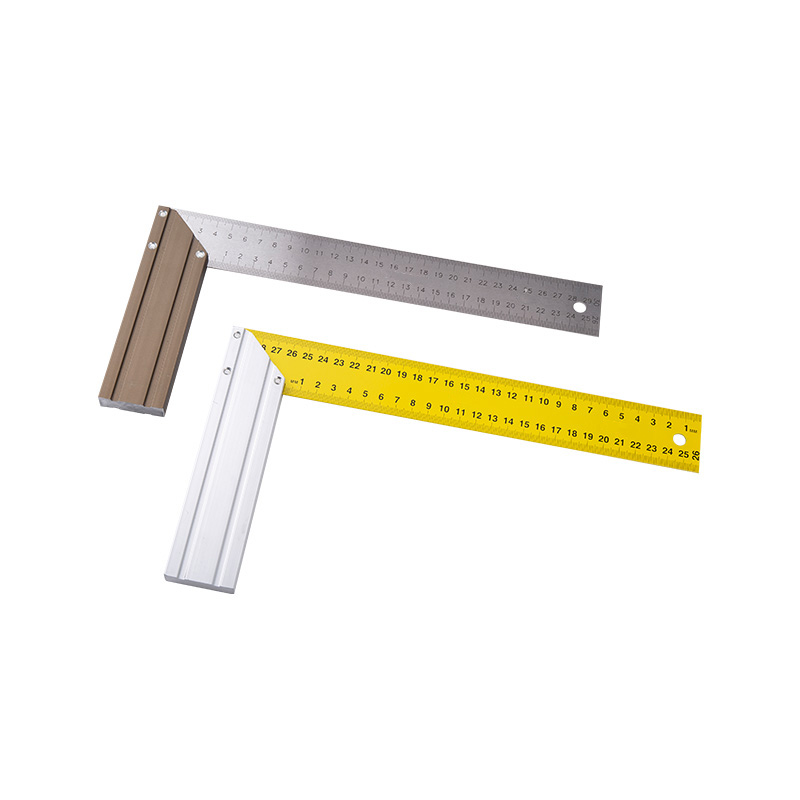To ensure accurate measurements when using a try square, follow these steps:
1.Select a Suitable Surface:
Choose a workbench, table, or surface that is flat and level. A stable foundation will help ensure the accuracy of your measurements.
2.Inspect the Try Square:
Thoroughly examine the try square for any defects, such as dents, bends, or damage to the blade, stock, or edges. Cleaning the tool before use will help ensure accurate readings.
3.Position the Try Square:
Align the stock (long arm) of the try square with the reference edge of the material you want to measure or mark. Make sure the stock rests securely against the material.
4.Align the Blade:
Place the blade (short arm) of the try square flush against the surface you are measuring. Ensure that the blade is perpendicular to both the stock and the material.
5.Check for Squareness:
Examine the intersection of the blade and the stock closely. Look for any gaps or light between the blade and the material. A perfect 90-degree angle will show no gaps.
6.Adjust if Necessary:
If the try square is not perfectly square, make minor adjustments until it aligns accurately. Some try squares have an adjustment screw that allows you to fine-tune the angle.
7.Secure the Position:
Press the try square firmly against the material to prevent any movement while marking or measuring. This ensures consistent and accurate results.
8.Mark or Measure:
Use a pencil, marking knife, or other appropriate marking tool to make precise marks along the reference edge of the material. Ensure that your marks are clear and easy to read.
9.Double-Check:
After marking or measuring, recheck the alignment of the try square to confirm that it has not shifted during the process.
10.Maintain Consistency:
To ensure accuracy, consistently use the same side of the try square against the reference edge when making multiple marks or measurements.
11.Use Caution with Pressure:
Avoid applying excessive pressure when pressing the try square against the material, as this can distort the material or affect the accuracy of your measurements.
12.Store Carefully:
When you have finished using the try square, store it in a clean and safe area. Protect it from accidental drops or impacts that could affect its precision.
13.Regular Maintenance:
Periodically inspect and clean your try square. If there's an adjustment screw, ensure it is properly lubricated and adjusted. Keeping the tool in good condition contributes to its longevity and accuracy.
1. Stainless steel etched blade or bright color blade
2. Aluminium natural color handle or Bronze oxidation handle
3. Inch or metric graduations

 [email protected] / [email protected]
[email protected] / [email protected]
 +86-571-81993095
+86-571-81993095

